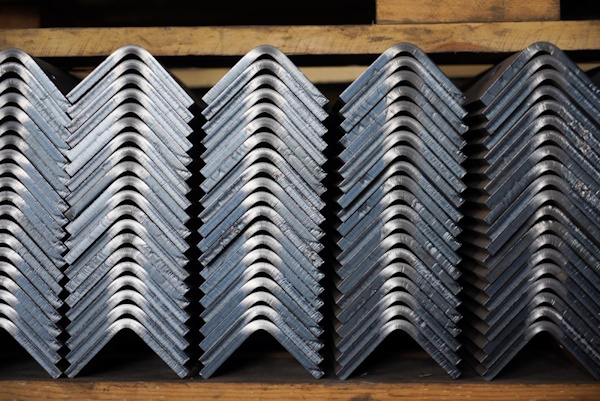There have been many environmental problems that the world has encountered, and these have consequently driven the construction industry to shift towards being sustainable. Metal sheet piling in the Philippines has really become an integral part of the drive towards more sustainable construction efforts, which mainly include reducing the damage done to the environment, optimizing use of resources, and promoting health and well-being in the community.
This article dives into the issues of importance of this structure in relation to sustainable construction in the Philippines by showing its various applications, environmental advantages, economic benefits, social effects, and how it aligns with the kind of goals that are being pursued in sustainable development.
Understanding Metal Sheet Piling
What is Metal Sheet Piling?
The steel or aluminum sheet interlocked is driven into the ground to form metal sheet piling. These sheets provide a strong shield against erosion by both water and soil. They provide support and stability to several construction applications. The marvelous properties offered by this structure, such as a higher strength-to-weight ratio and durability, with resistance to corrosion, make it widely applicable in various fields.
Applications of Metal Sheet Piling
This structure is versatile and can be used in several applications:
Flood Control Measures
Sheet piling in metals prevents advancing water from flooding the territory in flood-prone areas of the Philippines. It is utilized in the making of levees and floodwalls for potential flooding that could affect infrastructure and communities.
Marine and Coastal Structures
Given the archipelago characteristic of the Philippines, coastal protection is very essential. Well, seawalls that stabilize shorelines and halt erosion frequently consist of these structures as a result of protective measures to safeguard a coastline with properties.
Retaining Walls and Foundations
In urban construction projects where space is limited or soil conditions are challenging, this structure provides robust support for retaining walls and foundations. Its ability to withstand lateral earth pressures makes it a preferred choice for various structural applications.
Environmental Benefits of Metal Sheet Piling
Recyclability and Resource Efficiency
One of the most significant advantages of this structure is its recyclability. Unlike traditional materials such as concrete or wood, which often end up in landfills at the end of their lifecycle, this structure can be reused or recycled multiple times without losing its structural integrity. This characteristic contributes to a more sustainable approach to construction by minimizing waste generation.
According to studies on construction waste management, construction activities contribute significantly to overall waste production. By utilizing recyclable materials like these, projects can greatly reduce their environmental footprint. This aligns with global efforts to promote circular economy principles within the construction industry.
Durability and Longevity
Metal sheet piling boasts impressive durability compared to conventional materials. While wood may rot or weaken over time due to exposure to moisture or pests, these structures can withstand harsh environmental conditions without significant degradation. This longevity translates into fewer repairs and replacements over time, further contributing to sustainability by reducing resource consumption.
In regions prone to extreme weather events—such as typhoons common in the Philippines—this structure’s resistance to corrosion ensures that infrastructure remains intact even under severe conditions. This resilience not only protects investments but also enhances community safety.
Economic Advantages
Cost-Effectiveness in Construction
Though the price of establishing these structures in its initial stage might be a little steep compared to most conventional materials, such as wood or concrete, long-term cost advantages cannot be overlooked. Given that metal sheets are much sturdier than conventional materials, they require replacement or even maintenance less frequently over a much longer lifetime. For that reason, owners of such projects can save lifecycle costs to make repairs and replacements.
Maintenance and Lifecycle Costs
The reduced maintenance requirements associated with these structures further enhance its economic viability. Once installed, these structures demand minimal upkeep compared to traditional materials that may require regular inspections or repairs due to wear and tear. The lower maintenance burden translates into substantial savings over time.
For instance, projects utilizing these materials for flood control measures can expect decreased operational costs related to ongoing maintenance efforts.
Social Implications of Sustainable Practices
Community Impact and Engagement
Sustainable construction practices extend beyond environmental benefits; they also encompass social dimensions that enhance community well-being. The use of these materials often involves techniques that minimize disruption during installation processes. For example, silent installation methods reduce noise pollution—a significant concern in densely populated urban areas.
Resilience Against Natural Disasters
Given the Philippines’ vulnerability to natural disasters such as typhoons and flooding, constructing resilient infrastructure is paramount for safeguarding lives and properties. This structure plays a crucial role in enhancing disaster preparedness by providing robust barriers against extreme weather events.
Case studies illustrate how communities have benefited from implementing using these materials as solutions for flood control measures. For instance, regions that invested in seawalls made from interlocking sheets experienced reduced damage during typhoons compared to those relying on less resilient structures. By prioritizing sustainable practices like these, stakeholders contribute not only to immediate safety but also long-term community resilience.
Aligning with Sustainable Development Goals
Contribution to Climate Resilience
Adopting sustainable construction practices supports the larger effort of combating the impacts of climate change. The United Nations’ Sustainable Development Goals emphasize and highlight the need to have resilient infrastructure that can adapt to changes in the environment.
Using these materials for construction purposes aligns with such objectives through secure solutions to climate change, such as sea level rise or increased intensity of rainfall.
Enhancing Infrastructure Development
As urbanization accelerates across the Philippines—driven by population growth and economic expansion—the demand for reliable infrastructure continues to rise. These structures offers an effective solution for meeting these demands while maintaining environmental standards.
By integrating sustainable materials into urban planning efforts—from flood control systems along riverbanks to retaining walls supporting new developments—stakeholders can balance growth with responsible resource management. This holistic approach ensures that infrastructure development does not come at the expense of ecological integrity or community well-being.
Challenges and Considerations
Potential Drawbacks of Metal Sheet Piling
Despite its numerous advantages, there are challenges associated with using metal sheet piling in construction projects. One concern is the initial cost; while it may offer long-term savings through durability and reduced maintenance needs, some stakeholders may hesitate due to upfront expenses compared to cheaper traditional materials like wood or concrete.
Future Trends in Sustainable Construction
Looking ahead, innovations in materials science are expected to drive further advancements within sustainable construction practices—including those involving metal sheet piling technology itself. Emerging trends such as smart materials capable of self-repairing or integrating sensors for monitoring structural integrity could enhance both performance outcomes while reducing environmental impacts associated with traditional methods.
Key Takeaway
Sustainability practices in construction utilizing metal sheet piling in the Philippines present a compelling case for addressing both environmental challenges and infrastructure needs within the country. By leveraging this innovative material’s recyclability, durability, and cost-effectiveness—stakeholders can contribute meaningfully toward building resilient communities capable of thriving amid changing climate conditions while minimizing ecological footprints along the way.
- Sustainability Practices in Construction with Metal Sheet Piling
- Metal sheet piling in the Philippines has really become an integral part of the drive towards more sustainable construction efforts
- Metal sheet piling
Related posts:
 Porta Cabin Sizes in the UAE: A Comprehensive Guide for Builders and Developers
Porta Cabin Sizes in the UAE: A Comprehensive Guide for Builders and Developers
 Discover Your Dream Home at Kalpataru Blossoms Sinhagad Road – Premium Property for Sale in Pune
Discover Your Dream Home at Kalpataru Blossoms Sinhagad Road – Premium Property for Sale in Pune
 Invest in Sobha Magnum – Premium Apartments in Bannerghatta Road, Bangalore
Invest in Sobha Magnum – Premium Apartments in Bannerghatta Road, Bangalore
 Airbnb Maintenance Service in Dubai: Reliable Upkeep for Your Rental
Airbnb Maintenance Service in Dubai: Reliable Upkeep for Your Rental
 Why Everyone’s Talking About Prestige Pallava Gardens Chennai
Why Everyone’s Talking About Prestige Pallava Gardens Chennai
 Investing in Excellence: A Guide to Downtown Dubai Penthouses
Investing in Excellence: A Guide to Downtown Dubai Penthouses
 Making Home Refurbishment Easier with the Help of The Experts in London
Making Home Refurbishment Easier with the Help of The Experts in London
 What Are the Pros and Cons of Buying a Furnished Apartment for Sale in Abu Dhabi?
What Are the Pros and Cons of Buying a Furnished Apartment for Sale in Abu Dhabi?








